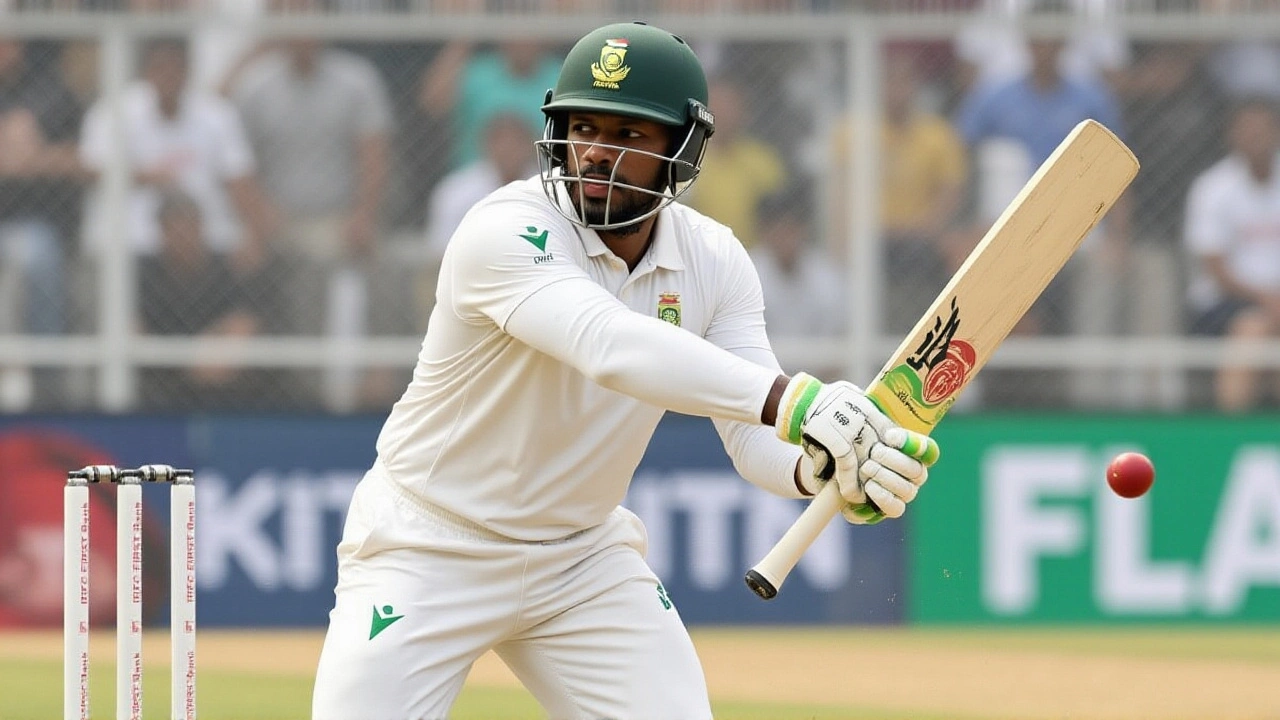When Senuran Muthusamy reached his century on Day 2 of the second Test in Guwahati, it wasn’t just a personal milestone—it was a statement. Batting at No. 7 for South Africa, the all-rounder carved out 109 off 206 balls at the Assam Cricket Association Stadium on Sunday, November 23, 2025, becoming only the third South African to score a Test century batting seventh or lower on Indian soil. The innings, laced with 10 fours and two sixes, wasn’t flashy—it was fortress-like. And it changed the entire complexion of the match.
Elite company: Muthusamy joins de Kock and Klusener
Muthusamy’s 109 places him in rare air. Before him, only two South Africans had managed this feat against India in India: Quinton de Kock with 111 at No. 7 in Visakhapatnam in 2019, and Lance Klusener with 102 not out at No. 8 in Cape Town back in 1997. But here’s the twist: Klusener’s knock came at home. De Kock’s was on Indian soil—but Muthusamy’s was different. He did it against a home side that hadn’t allowed two lower-order batters to pass fifty in the same innings in over a decade.His innings wasn’t just about runs. It was about patience. He took 165 minutes to reach his half-century. Commentary from Willow TV described it as "the application, the technique, and the temperament"—a "better test innings you won’t find." The only moment of doubt? A faint glove on a delivery that triggered a review. It was caught. He survived. And kept going.
The 94-run partnership that broke India’s back
The real story, though, wasn’t just Muthusamy. It was the partnership with Marco Jansen. The two, batting at No. 7 and No. 8, added 94 runs for the eighth wicket. Jansen, on 93, was moments away from becoming the first South African since Klusener to score a century from that position against India in India. But fate intervened. A mis-timed sweep off Kuldeep Yadav—an inside edge—snicked the ball onto the stumps. The crowd gasped. Jansen stared at the ground. He’d missed his hundred by seven runs.And yet, their stand was historic. For the first time ever in Test cricket, two South African batters at No. 7 or lower had both scored fifties in the same innings against India. That’s not just luck. That’s structure. That’s discipline. That’s a batting unit that refused to buckle under pressure.

India’s lower-order vulnerability exposed
This wasn’t an anomaly. It was a pattern. Since 2012, only two times have two visiting batters from No. 7 or lower both scored fifties against India on home soil. The last? England’s Liam Dawson (66*) and Adil Rashid (60) at Chepauk in 2016. Both were spinners. Both were lower-order contributors. Both exploited the same cracks India’s bowling attack keeps leaving open.Head coach Gautam Gambhir has repeatedly stressed discipline in India’s bowling. But against lower-order resilience, the plan seems to unravel. Spinners overpitch. Fast bowlers lose line. Field placements stay predictable. The result? Batters like Muthusamy and Jansen aren’t just surviving—they’re thriving.
South Africa’s first-innings total of 489 was their highest in India since 2010. And they did it without their star batter, Aiden Markram, who missed the match due to injury. The depth was on full display. No one batted above No. 6 scored a century. But the bottom half? They delivered.
What happens on Day 3—and beyond
As the match heads into Day 3, South Africa holds all the cards. India’s reply will be watched closely. Can their top order—Rohit Sharma, Virat Kohli, Shubman Gill—respond with the same grit? Or will they crumble under the weight of a 489-run deficit?For South Africa, this isn’t just about winning this Test. It’s about proving they can win in India. The last time they won a Test series here? 2004. That’s 21 years ago. This innings, this partnership, this performance—this is the foundation. If they can enforce a follow-on or force a collapse, they might just end that drought.

Historical context: Why lower-order runs matter in India
Indian pitches, especially in the post-2010 era, are designed to reward spin and punish lower-order aggression. Teams that score 400+ in India often do so with contributions from No. 7 and below. But for visiting sides? It’s rare. That’s why Muthusamy’s century is so significant. He didn’t just score runs—he rewrote expectations.Compare this to Australia’s 2023 tour, where their No. 7 and No. 8 combined for just 28 runs across two Tests in India. Or England’s 2021 campaign, where their lower order was dismissed for 14 runs in the final session of a crucial Test in Chennai. South Africa didn’t just survive—they dominated. And that’s what makes this innings unforgettable.
Frequently Asked Questions
How rare is it for two lower-order batters to score fifties against India in India?
It’s happened only twice in the last 13 years: once in 2016 (England’s Liam Dawson and Adil Rashid at Chepauk) and now in 2025 with Senuran Muthusamy and Marco Jansen in Guwahati. Before that, the last instance was in 2008 when Pakistan’s lower order did it in Lahore. For visiting teams, this is a sign of India’s bowling vulnerability under pressure.
Why is batting at No. 7 or lower against India so difficult?
Indian pitches favor spinners who turn the ball sharply in the final two days. Batters at No. 7 or lower are often tailenders who don’t face the same volume of deliveries. Muthusamy’s 206-ball century shows exceptional concentration—he faced 117 balls from spinners alone, and only lost his wicket after nearly five hours at the crease.
What does this mean for South Africa’s chances in the series?
South Africa now leads 1-0 in the two-match series. With a 489-run lead, they can force a follow-on and aim for victory on Day 4. A win here would be their first Test series triumph in India since 2004. More importantly, it signals a new era of depth and resilience in their batting lineup.
How did Kuldeep Yadav perform in this innings?
Kuldeep took 3 wickets for 124 runs, including the crucial dismissal of Jansen. But his economy rate of 3.15 was the highest among India’s frontline spinners. He struggled to contain Muthusamy, who scored 32 runs off his bowling alone. His inability to break the partnership cost India dearly.
Has any other South African scored a Test century in India since 2019?
No. Quinton de Kock’s 111 in Visakhapatnam in 2019 was the last South African century on Indian soil until Muthusamy’s 109 in 2025. Faf du Plessis and Temba Bavuma both failed to reach 50 in their last two tours. Muthusamy’s knock breaks a six-year drought for South African centurions in India.
What’s the significance of this match for the South Africa tour of India 2025?
This is the second and final Test of the tour. South Africa’s dominant first innings puts them in pole position to win the series 2-0, something no visiting team has done in India since 2001. A win here would be their most significant Test series victory abroad in over two decades.
